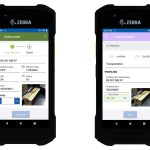With fuel prices at an all-time high, margins couldn’t be tighter for fleet-based businesses. Even if prices fall back in the short term, market volatility is here for the long haul. And as every fleet manager knows, any uptick in oil prices or unnecessary fuel consumption can hit costs hard and dent profits.
One way around this is to squeeze more miles out of every last drop of fuel, and technology is increasingly being used to achieve this goal.
Using sensors located in vehicles and linked to an always-on communications network that feeds back to a single screen, fleet managers can now gain a real-time overview of their entire operation.
By harnessing the Internet of Things (IoT), fleet managers can access in-depth data about vehicle and driver performance that would have been unimaginable just a few years ago. Fleet managers can see instantly which vehicles are using fuel economically and those that are prone to be thirsty.
Here, Philip van der Wilt, VP EMEA, Samsara, picks the key elements where connected operations technology can empower fleet managers to make informed decisions about how to improve fuel efficiency and keep a lid on costs.
1. Cutting fuel consumption
Modern monitoring systems not only show how much fuel is being combusted, they allow you to account for how each drop is used. For instance, abnormally high fuel use linked with specific vehicles may point to a maintenance issue.
On the other hand, higher than average fuel consumption by individual drivers may suggest that driving traits — such as sudden increases or decreases in speed, heavy braking, speeding or prolonged stops with the engine still running — may need to be addressed.
Monitoring fuel consumption this way, ensuring vehicles work at their best and drivers refrain from fuel-burning driving behaviours, can deliver tangible benefits.
2. Improving fuel efficiency
Carefully planned itineraries that optimise delivery routes and payloads can go a long way to help with improving fuel efficiency. It’s not just planning before a vehicle leaves a depot or yard either. Real-time traffic information can highlight congestion — caused by accidents, road works or the sheer volume of traffic — so alternative routes can be initiated quickly.
In fact, the huge volume of data created through IoT-enabled connected operations enable hundreds and thousands of calculations to be carried out in minutes to ensure that each vehicle, driver, route and payload is optimised for fuel efficiency.
3. Identifying and eradicating unnecessary idling time
Attempts to reduce unnecessary engine idling are nothing new. It’s estimated that idling for one hour can consume up to a gallon of fuel. It might not seem like much, but incremental consumption over time and across a whole fleet quickly adds up.
As the price of fuel continues to climb, excessive idling only increases costs.
Connected technology that is embedded in vehicles can identify the causes of idling in real-time, whether it’s down to driver behaviour, road/traffic-related hold-ups or the need to power ancillary devices such as refrigeration systems.
In doing so, fleet managers gain a complete oversight of what idling is unavoidable, and those areas where changes would reap sizable savings.
4. Estimating fuel costs and managing change
A valuable approach for fleet managers is the ability to estimate costs as part of a broader fuel and energy report.
The most effective management tools are those that can calculate fuel costs using various price points — accounting for predicted price fluctuations — providing a view on the impact of (likely) future price hikes or fluctuations.
These planning scenarios may not deliver savings in the short term but estimates and predictions about changing input costs can help to shape management decisions and financial planning that contributes to the profitability of the business.
5. Engine run time vs miles travelled
Accurate engine hour data helps businesses monitor the wear and tear on their vehicles, even when the vehicle is stationary. The information has proven to be invaluable when it comes to fleet management systems enabling the scheduling of preventive maintenance alerts based on engine hours rather than miles travelled.
The information can also be fed into maintenance assessment programs that pinpoint exactly when vehicles need to be off the road and in the workshop. These predictive maintenance breaks – rather than more rigid scheduled downtime based on miles driven – can help to pre-empt avoidable breakdowns and costly repairs.
Such systems can also help to predict more accurately when a vehicle is no longer commercially viable and should be replaced.
Small changes, big savings
Each of these areas has the potential to reduce unnecessary fuel consumption and save costs. But, added together, across a whole fleet, over a year, and it’s easy to see how the combination of small changes can add up to a big cost saving.
Just as a vehicle is at its best when it’s properly maintained and running efficiently, so too is a fleet of vehicles that makes optimal use of fuel saving telematics to make sure it’s running on all cylinders.
The post Five ways to cut fuel costs appeared first on Logistics Business® Magazine.

